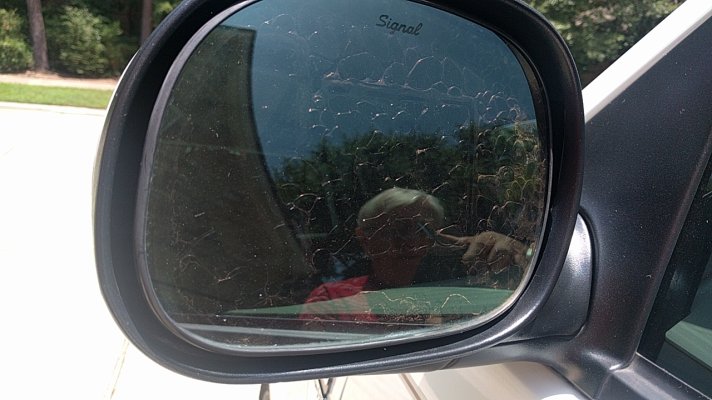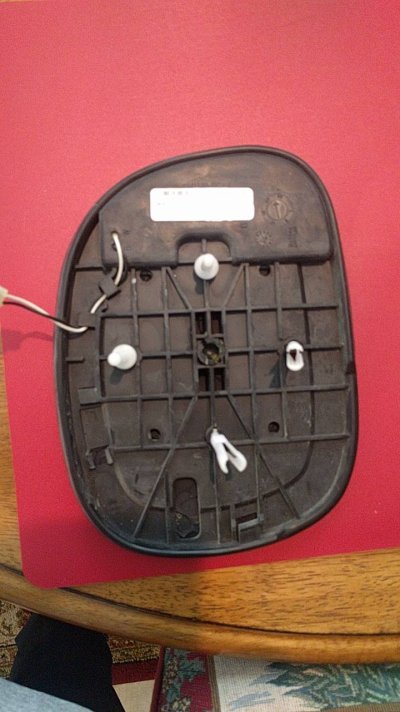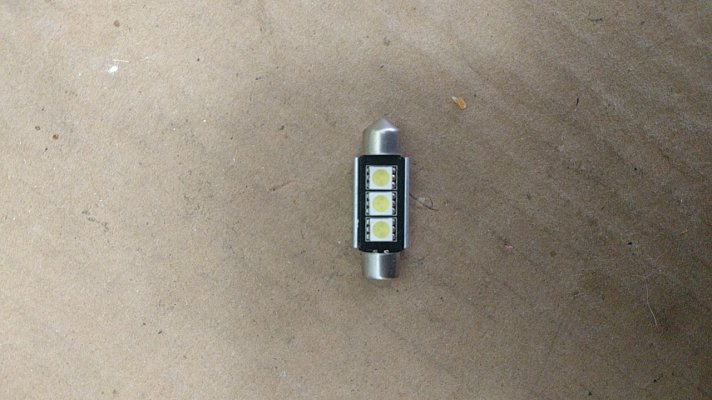aja8888
Moderator Emeritus
Question for you electrical guys.
On my 1998 Ford F150, I have signal lights embedded in my outside mirrors that flash with the normal turn signal stalk activation. The mirror flash is made up of LEDs (remember, truck is 21 years old) and form a pattern like this: “<” (in each mirror.
These have stopped working, although I see a faint reddish glow in the mirror where the LED string is when the signal is engaged. So I took off one mirror plate and backing and found the LEDs are encapsulated within a hard rubberish backing that covers the back of the mirror. Two power leads are sticking out of the backing material and connect to a 12V source inside the mirror housing.
When I tested the power to the mirror (output connector) LEDs when cycling the signal light on the side I was testing, my digital voltmeter reads ~10.7 volts (cycling between 0 and 10.7 quickly).
Three questions:
1. Can I accurately check a DC voltage with a VOM when it’s quickly cycling on and off?
2. Can these LEDs fire effectively at a voltage less than 12 VDC?
3. Is it possible the LEDs are “dying” after 21 years and only work at partial brightness?
Note: the mirror glass is OK, but on close examination, a "scalloped" looking defect is visible within the thickness of the glass. Nothing is cracked or broken, but you have to look close to see the scallop lines within the glass.
Thanks for any help or suggestions.
P.S. OEM replacment mirrors are not readily available and if there were, they would cost quite a bit, I am sure. Plus, I'm not sure it's a mirror problem.
Pic of scalloped mirrors:

Back of mirror:

On my 1998 Ford F150, I have signal lights embedded in my outside mirrors that flash with the normal turn signal stalk activation. The mirror flash is made up of LEDs (remember, truck is 21 years old) and form a pattern like this: “<” (in each mirror.
These have stopped working, although I see a faint reddish glow in the mirror where the LED string is when the signal is engaged. So I took off one mirror plate and backing and found the LEDs are encapsulated within a hard rubberish backing that covers the back of the mirror. Two power leads are sticking out of the backing material and connect to a 12V source inside the mirror housing.
When I tested the power to the mirror (output connector) LEDs when cycling the signal light on the side I was testing, my digital voltmeter reads ~10.7 volts (cycling between 0 and 10.7 quickly).
Three questions:
1. Can I accurately check a DC voltage with a VOM when it’s quickly cycling on and off?
2. Can these LEDs fire effectively at a voltage less than 12 VDC?
3. Is it possible the LEDs are “dying” after 21 years and only work at partial brightness?
Note: the mirror glass is OK, but on close examination, a "scalloped" looking defect is visible within the thickness of the glass. Nothing is cracked or broken, but you have to look close to see the scallop lines within the glass.
Thanks for any help or suggestions.
P.S. OEM replacment mirrors are not readily available and if there were, they would cost quite a bit, I am sure. Plus, I'm not sure it's a mirror problem.
Pic of scalloped mirrors:

Back of mirror:

Last edited:



